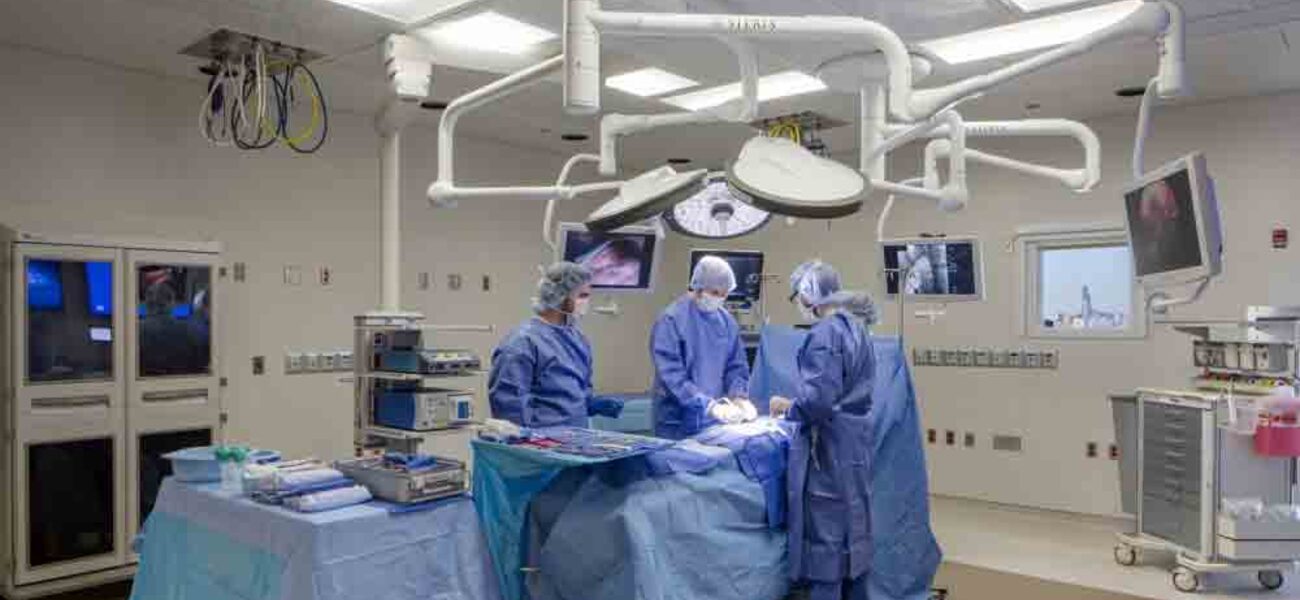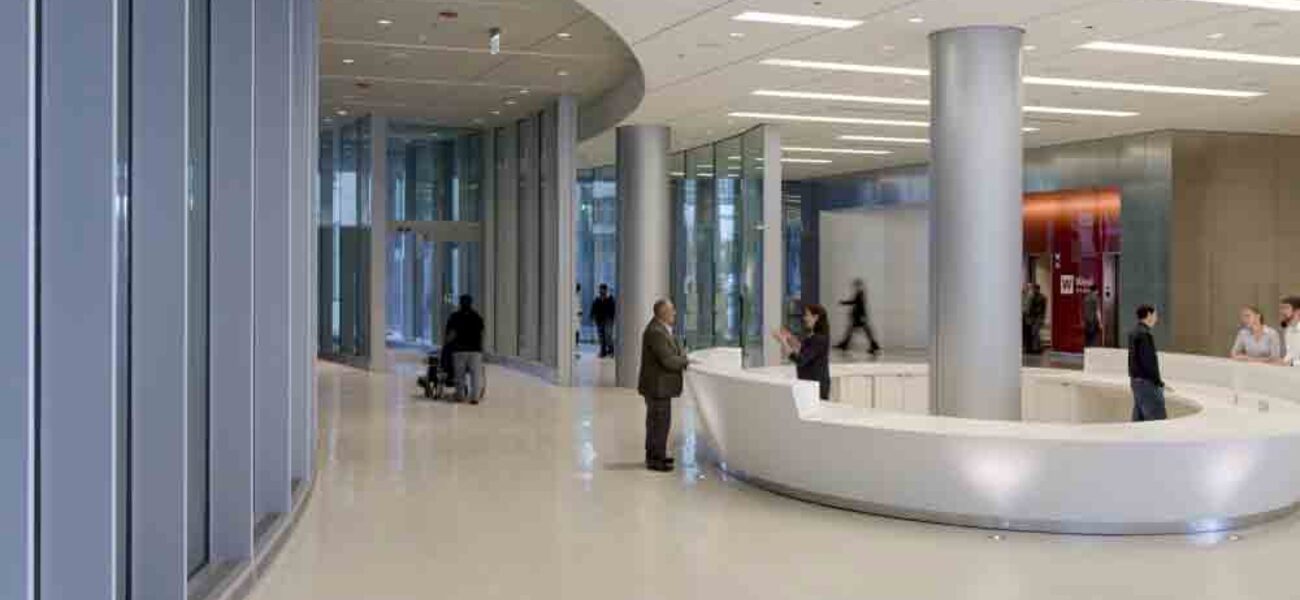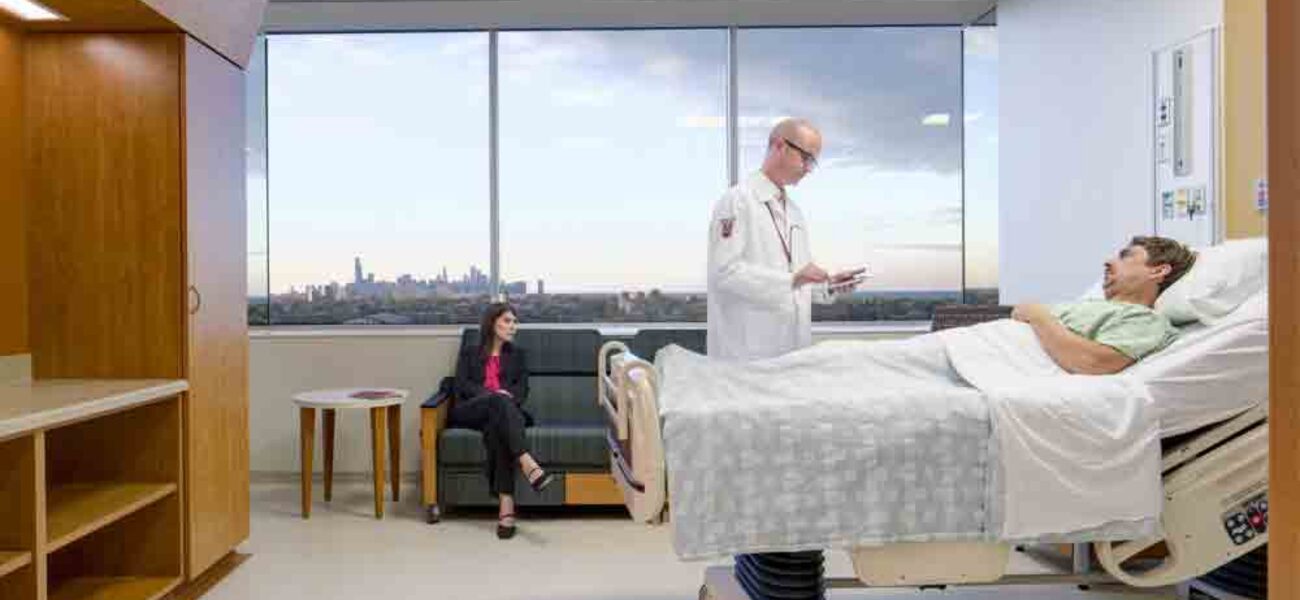The Center for Care and Discovery, at the University of Chicago Medical Center, is dedicated to patient care and designed for flexibility. The massive 1.2 million-sf structure stands only 12 stories high, including two stories of mechanical space, but its footprint occupies the north side of two city blocks and spans the street between them. Its construction was a key component of a long-term master plan that includes the consolidation of clinical, academic medical, and medical research under one umbrella organization: the University of Chicago Medicine & Biological Sciences Division and Pritzker School of Medicine.
The hospital contains 240 single-occupancy inpatient rooms, including 52 intensive care beds; space for 28 technology-rich operating rooms; and an integrated diagnostic and interventional platform that includes cardiac, gastrointestinal, neurological, and vascular care, in addition to advanced surgery—including multi-organ transplants and robotic surgeries—and high-technology medical imaging. All patient rooms can comfortably accommodate multiple family members, and the waiting areas are located nearby.
The flexibility comes from the strict modular grid pattern used across all floors: The entire hospital structure is organized into “bays.” At 31.5 sf and 18 feet high, these large modules can be repurposed over time to accommodate new innovations and changing needs. One bay can enclose two patient rooms, for example, or one operating room or one interventional procedure room—without changing the basic framework of the building. The middle two floors were initially left as shell space, but are currently under construction in order to provide additional inpatient/observation beds, at an additional cost of $150 million ($90 million for construction) with completion expected in June 2016.
One of the building’s most unusual features is the main lobby, which is located on the seventh floor. This “Sky Lobby” features floor–to–ceiling glass walls that fill the space with natural light and provide panoramic views of the campus and downtown Chicago. The lobby houses central reception, family waiting areas, a chapel, the gift shop, 24-hour dining areas that can seat 200 people, and other public spaces.
The ground level, which is open to the public, includes cafés and restaurants.
The building was awarded Leed Silver certification.
| Organization | Project Role |
|---|---|
|
Rafael Viñoly Architects
|
Lead Architect
|
|
CannonDesign
|
Consulting Architect
|
|
Gilbane
|
Builder
|
|
W.E. O'Neil Construction
|
Builder
|
|
CannonDesign
|
Medical Facilities Planner
|
|
MEP/FP Engineer
|
|
|
Brandston Partnership, Inc.
|
Lighting Design
|
|
David Mason & Associates
|
Civil Engineer
|
|
Hughes Associates, Inc.
|
Fire Protection
|
|
Lerch Bates
|
Elevator Consultant
|
|
Papadimos Group
|
Acoustic/Vibration Consultant
|
|
Primera
|
MEP/FP
|
|
Thornton Tomasetti
|
Structural Engineer
|
|
Johnson Controls Inc.
|
Building Controls
|
|
Otis Elevator Company
|
Elevators
|
|
Schneider Electric
|
Access Controls and Security Systems
|
|
Carrier Corp.
|
Chillers
|
|
Baltimore Air Coil
|
Cooling Towers
|
|
TMI Climate Solutions
|
Air Handling Units
|
|
Greenheck Fan Corporation
|
Exhaust System Units
|
|
Caterpillar
|
Emergency Generators
|
|
Asco Automatic Switch Co.
|
Automatic Transfer Switches
|
|
ABB
|
Variable Frequency Drives
|
|
Swisslog
|
Pneumatic Tube System
|



